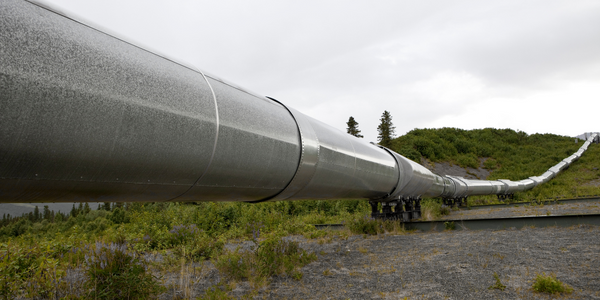Technology Category
- Robots - Collaborative Robots
Applicable Industries
- Education
- Oil & Gas
Use Cases
- Time Sensitive Networking
About The Customer
Handshake is a San Francisco-based job network for college students. The company's mission is to democratize access to meaningful career opportunities for students of all backgrounds, regardless of their demographics, networks, or the schools they attended. Handshake empowers career centers at over 1,400 higher education institutions, including four-year and community colleges, boot camps, and minority-serving institutions. More than 650,000 employers use Handshake to diversify their recruiting pipelines, boost their employer brands, and build relationships with entry-level professionals. Between 2018 and 2020, 49% of college graduates received job offers for roles they found on Handshake’s platform. The company has over 600 employees and plans to hire 350+ people this year.
The Challenge
Handshake, a job network for college students, faced a significant challenge in managing its talent acquisition process. The company's talent acquisition team, comprised of seasoned professionals, understood the importance of efficiency and data in the hiring process. However, they lacked the bandwidth and data-driven insights to transition from an administrative role to a strategic one in their relationships with hiring managers. The team needed a solution that would allow them to source strategically and at scale for the numerous roles they had open. They also needed a tool that would automate follow-ups, allow for link sharing, and ensure that talent would see their outreach. Furthermore, the team was spending more time creating reports than talking to candidates, which was not ideal given the organization's hiring goals.
The Solution
Handshake's solution came in the form of Gem, an automation and outreach tool. Gem allowed Handshake's recruiters to save hours on outreach and optimize messaging. With Gem's Talent Pipeline, recruiters could bring full-funnel insights to their syncs with hiring managers, allowing for more dynamic conversations around the holistic pipeline and how to improve the hiring process. The tool also provided data insights, allowing teams to spot trends like the best source-of-hire and answer questions about the effectiveness of their talent branding efforts. Gem's Talent Pipeline also provided a high-level overview of their pipelines, fundamentally shifting the recruiters' relationships with hiring managers and improving workflows and the candidate experience. The tool also allowed for efficient candidate management, with each candidate tile containing all the information a recruiter or manager would need to know about that candidate.
Operational Impact
Quantitative Benefit

Case Study missing?
Start adding your own!
Register with your work email and create a new case study profile for your business.
Related Case Studies.

Case Study
Taking Oil and Gas Exploration to the Next Level
DownUnder GeoSolutions (DUG) wanted to increase computing performance by 5 to 10 times to improve seismic processing. The solution must build on current architecture software investments without sacrificing existing software and scale computing without scaling IT infrastructure costs.

Case Study
Remote Wellhead Monitoring
Each wellhead was equipped with various sensors and meters that needed to be monitored and controlled from a central HMI, often miles away from the assets in the field. Redundant solar and wind generators were installed at each wellhead to support the electrical needs of the pumpstations, temperature meters, cameras, and cellular modules. In addition to asset management and remote control capabilities, data logging for remote surveillance and alarm notifications was a key demand from the customer. Terra Ferma’s solution needed to be power efficient, reliable, and capable of supporting high-bandwidth data-feeds. They needed a multi-link cellular connection to a central server that sustained reliable and redundant monitoring and control of flow meters, temperature sensors, power supply, and event-logging; including video and image files. This open-standard network needed to interface with the existing SCADA and proprietary network management software.

Case Study
Refinery Saves Over $700,000 with Smart Wireless
One of the largest petroleum refineries in the world is equipped to refine various types of crude oil and manufacture various grades of fuel from motor gasoline to Aviation Turbine Fuel. Due to wear and tear, eight hydrogen valves in each refinery were leaking, and each cost $1800 per ton of hydrogen vented. The plant also had leakage on nearly 30 flare control hydrocarbon valves. The refinery wanted a continuous, online monitoring system that could catch leaks early, minimize hydrogen and hydrocarbon production losses, and improve safety for maintenance.










